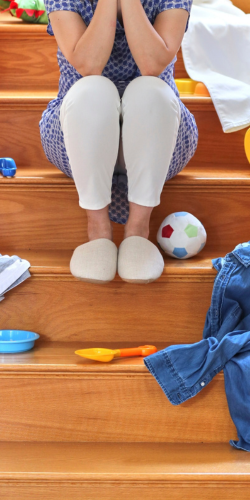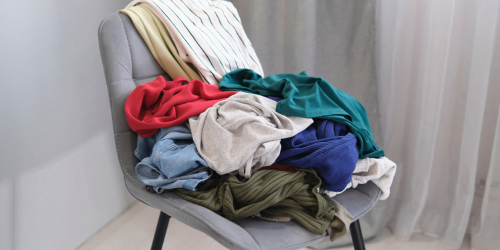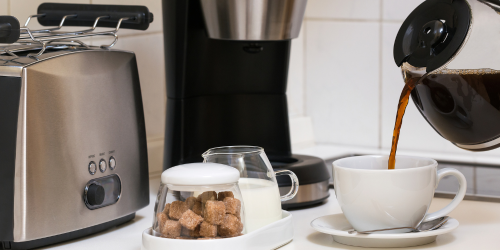🧼 Not Just the Junk Drawer: the Everyday Reset
You forget about the everyday reset that keeps your space in check. Let’s be honest: when you think about decluttering, your mind probably goes straight to the Big Stuff.
Right away you think of the garage.
Your brain reminds you by flashing you the piles of laundry in the basement.
And then there’s that closet you haven’t opened since 2009.
But here’s a gentle truth bomb: it’s not always the major messes that cause the most stress. Sometimes, it’s the tiny, everyday pockets of chaos — the ones we overlook, step over, or numb ourselves to — that actually do the most damage to our peace of mind.
This isn’t a post about purging your whole house in a weekend or transforming your living room into a minimalist magazine spread. It is about small wins. Sustainable shifts. A real-life, real-mess strategy.
This is The Everyday Reset.
🧠 The Everyday Reset: Why the Little Stuff Weighs So Much
Everyday clutter hides in plain sight. It’s the mug you never moved from the windowsill. The pair of scissors that somehow migrated to three different rooms. The charger cord that lives permanently draped across the kitchen counter like a pet snake.
It’s not “junk drawer” level bad. It’s not dramatic. And that’s why it wears you down.
These little friction points are like tabs left open in your mental browser. You can ignore them… until you can’t. They take up space. Not just on your table, but in your head.

Resetting these spots — the everyday ones — creates outsized relief. It’s not about organizing your whole life. It’s about reclaiming a little breathing room.
🏠 Eye-Level Clutter = Mood-Level Impact
Ever walk into a room and instantly feel your shoulders tense up?
It’s usually not the size of the mess — it’s what you see first.
- Perhaps the kitchen counter buried under unopened mail and yesterday’s mug.
- The coffee table that’s evolved into a remote-control cemetery.
- That hallway chair no one sits in anymore because it’s become the designated laundry drop.
These spaces matter because they greet you all day long. They’re part of your visual baseline, which means they’re quietly influencing your mood, even when you don’t realize it.
The Everyday Reset: Mini Reset Challenge

Choose one surface you see often (counter, table, corner or chair).
Clear it completely.
Only put back what truly belongs there — nothing more.
Let it breathe for 24 hours.
This small act sends your brain a message: Something changed. And suddenly, the rest of your space starts to feel more manageable too.
It’s the everyday reset in motion — subtle, powerful, and entirely doable.
🔍 Invisible Clutter: The Stuff You Don’t See, until you do!
You know that one shelf in your bathroom?
Or your nightstand that’s part charging station, part snack bar, part book graveyard?
What about the entryway table that’s now just a holding pen for randomness?
That’s invisible clutter. The kind your eyes gloss over because it’s been there for so long. You may not see it, but your nervous system hasn’t forgotten. It notices — and it tenses up every time you walk past.
Think of it like background noise coming from the TV. You just get used to it. That is until someone hits mute and you realize how loud it was.
Ask yourself:
- When did I actually use this last ?
- Does this live here, or did it just land here?
- What would this spot feel like if it were clear?
Ten minutes. One space. A quiet reset that clears more than the surface.
⏳ When Your Systems Fail: Function vs. Friction
Here’s the thing — a lot of clutter isn’t about laziness.
It’s about systems that don’t work.
That drawer that won’t close? Probably full of “just in case” things you never actually use.
The laundry basket that’s now just a second dresser? It’s probably telling you that the real dresser’s too full.
That shoe drop that turns into a mountain by Friday? It’s shouting that your entryway system doesn’t match your actual lifestyle.
These are not messes — they’re signals. Pain points. Little flags waving “Hey, this isn’t working.”
The Everyday Reset Fix:
- Look for the why behind the mess.
- Is it habit? Capacity? A missing step in the system?
- Ask yourself: Would this be easier with a bin — or just fewer things?
We tend to reach for organizers when we’re overwhelmed. But sometimes the most powerful organizer is subtraction.
Reset the system, and the surface stays clear by default.
🔁 The Everyday Reset, What Everyday Life Deserves
We usually associate resets with Big Life Moves.
New job, new city, new year. Full house purges and donation drives.
But what if we let the concept of “reset” be smaller — and closer?
Like the table you can’t eat at anymore because it’s half storage, half guilt.
The entryway that’s more anxiety than arrival.
Or how about the desk that silently says, “I’ve given up.” ?
You don’t need a full overhaul, you need a moment of restoration.
One surface. One corner. One drawer.
You’re not to impress anyone.
It’s not for Instagram.
Just for your own peace.
These micro resets do three powerful things:
- Reduce background stress.
- Give you a sense of progress without burnout.
- Build momentum that carries into the next space.
You’ll look around and realize — without even planning to — you’ve started making more intentional choices about what stays and what goes.
☕ Start Where Your Coffee Lands
There’s no perfect place to begin your everyday reset.
But there is a smart one: where your coffee (or tea, or water) cup lands every morning.

That surface?
Or in that corner?
On that desk edge?
It’s not random, it’s part of your daily rhythm. And decluttering it is like pressing a little life-alignment button.
Try this:
- Look at where your hand naturally reaches in the morning.
- See what’s cluttering that zone?
- What would it feel like to make it peaceful?
You don’t need a whole plan. Just a place to start.
Because your everyday reset isn’t a giant project — it’s a permission slip.
To do what you can.
Where you are.
With what you have.
Today.
🗒 Sticky-Note Edition (A Recap)
- The small spots matter more than you think.
- Invisible clutter still drains you, even when you’ve stopped seeing it.
- Function should feel like ease — not more effort.
- You’re not lazy. You’re just over capacity.
- One clear surface can change your whole day.
This isn’t about creating a Pinterest-perfect home.
It’s about making your space feel less like a battle — and more like a break.
One reset at a time.
Let’s put that away.





